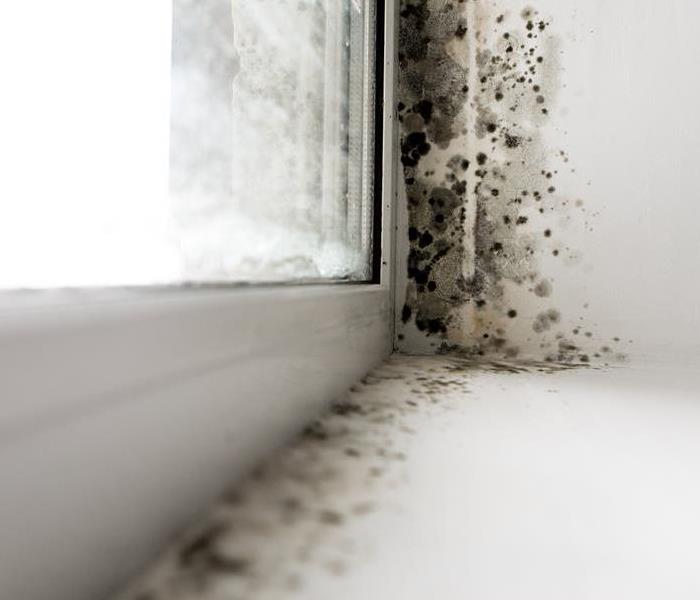What is the Relationship between mold and water damage?
10/24/2023 (Permalink)
Mold and water damage often go hand in hand, creating a symbiotic relationship that can wreak havoc on homes. In this blog, we will explore the connection between mold growth and water damage, highlighting how one can lead to the other. By understanding this relationship and taking proactive measures, homeowners can effectively prevent and address mold issues resulting from water damage.
The Role of Water Damage
Water damage acts as the catalyst for mold growth. When excess moisture or water enters a home due to leaks, floods, or high humidity levels, it creates the ideal conditions for mold spores to thrive. Moisture-saturated materials such as drywall, carpeting, and insulation provide an ample food source for mold. As the water permeates these materials, it promotes the growth of mold colonies, which can rapidly spread through the affected area. Recognizing and addressing water damage promptly is essential in preventing the onset and exacerbation of mold growth.
Warning Signs of Water Damage
Being able to identify the signs of water damage is essential for early detection and prevention of mold growth. Common indicators include water stains or discoloration on walls, ceilings, or floors. Peeling or bubbling paint or wallpaper can also signal water damage. Musty odors, dampness, or an increase in humidity within a particular area may suggest underlying water issues. Additionally, warped or buckling flooring, visible mold or mildew growth, or persistent plumbing leaks should be addressed promptly to mitigate the risk of mold development.
Preventing Mold Growth after Water Damage
After experiencing water damage, it is crucial to take immediate action to prevent mold growth. The first step is to identify and address the source of water intrusion, whether it's a leaky pipe, roof, or a plumbing issue. Swiftly drying out affected areas is crucial in inhibiting mold growth. Utilizing dehumidifiers, fans, and opening windows can aid in the drying process. Thoroughly cleaning and disinfecting surfaces with appropriate solutions is also necessary to prevent mold spores from taking hold. Proper ventilation and insulation can further help in reducing moisture and promoting air circulation to prevent future water-related issues.
Mitigating Mold Growth after Severe Water Damage
In cases of severe water damage, such as floods or extensive plumbing leaks, mold growth can be difficult to prevent without professional help. When dealing with significant water damage, it is prudent to engage the services of qualified mold remediation professionals. They can assess the extent of water damage and mold growth and implement appropriate remediation measures. This may include removing affected building materials, such as drywall or flooring, and thoroughly drying out the area to prevent the growth of mold spores. Additionally, utilizing specialized equipment and techniques, such as air scrubbers and negative air pressure units, can further aid in preventing mold spores from spreading to other areas of the home.
Understanding the symbiotic relationship between mold and water damage is vital for homeowners to effectively manage these issues. By promptly addressing and repairing water damage, implementing preventive measures, and ensuring proper drying and cleaning protocols, homeowners can prevent or minimize the risks of mold growth in their homes. Vigilance and timely action can safeguard homes from the damaging effects of mold resulting from water damage.






 24/7 Emergency Service
24/7 Emergency Service
